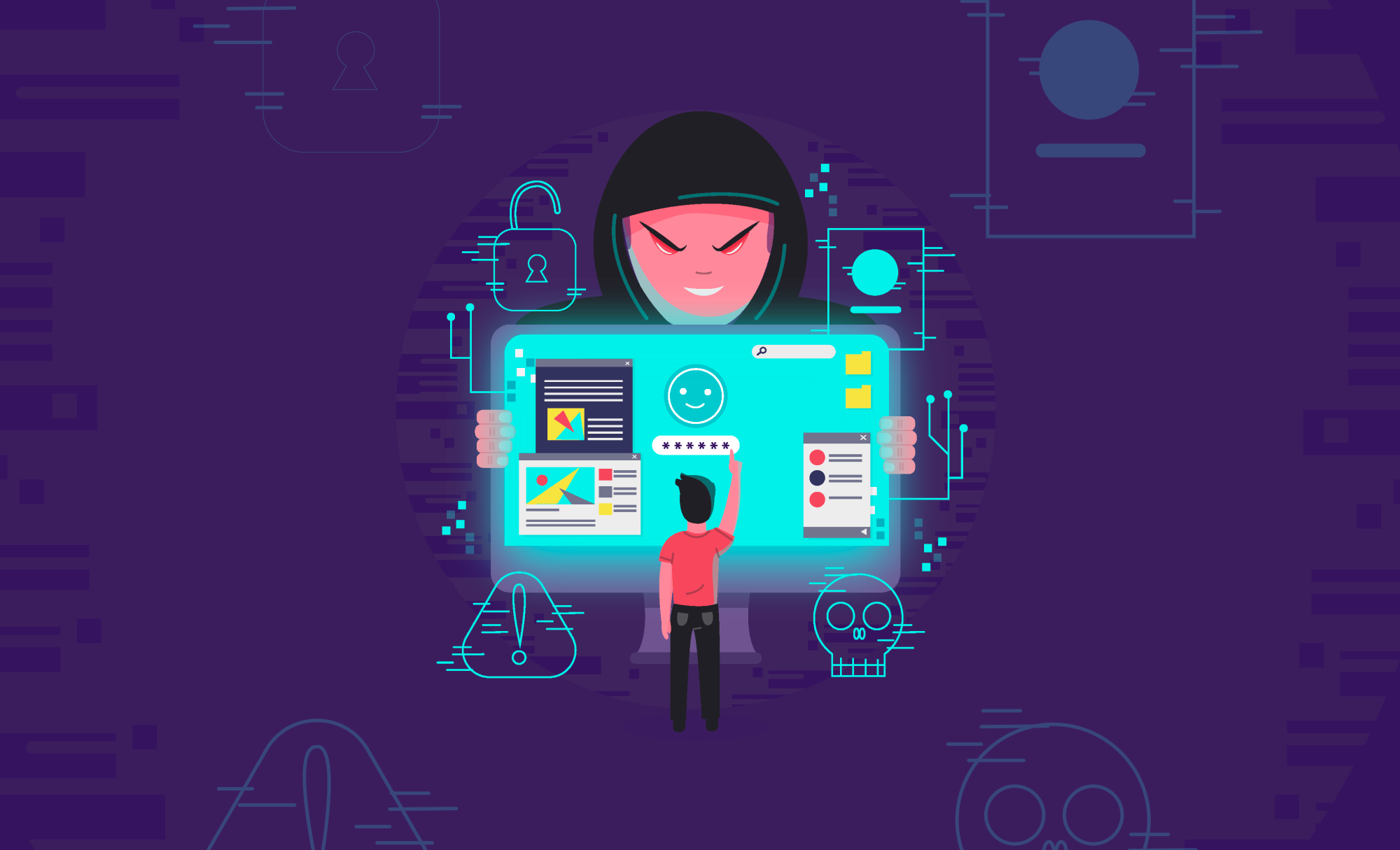
Within the vast expanse of the internet lies a concealed world, one that remains hidden from the average user's view. This obscure realm, commonly known as the "Dark Web," houses a myriad of cyber threats and illicit activities. In this blog, we will explore the domain of Dark Web threat intelligence, which utilises data gathering from the deep and Dark Web to assist organisations in recognizing, comprehending, and countering cyber threats emerging from the remote corners of the Internet.
Unmasking the Dark Web
Dark Web threat intelligence has the potential to utilise data acquired from sources in both the deep web and the Dark Web. Before we explore the intricacies of threat intelligence, it is essential to grasp the concept of the Dark Web and distinguish it from the surface web and the deep web.
The Dark Web is only a small fraction (0.01%) of the deep web, which contains Internet content not searchable by your standard search engines.
In other words, if Google can't find what you're looking for, it's probably still out there in the World Wide Web; it's just in the harder-to-access deep web. Conventional browsers like Google Chrome and Firefox can be used to access Deep Web content. However, users must possess prior knowledge of the website's URL or destination IP address. The Deep Web encompasses various properties, including password-protected forums, secured email accounts, and subscription-based websites.
The Dark Web constitutes a segment of the deep web, accessible exclusively through specialised networks such as Tor. It operates beyond the reach of traditional search engines and necessitates specific software for access. Anonymity reigns supreme here, with users often shielding their identities through encryption and intricate routing techniques. This measure is taken to prevent law enforcement, technology companies, and ISPs from keeping track of what happens on the Dark Web.
The Role of Dark Web Threat Intelligence
Because of its concealed nature and the anonymity it offers, the Dark Web has emerged as a breeding ground for cybercrime. It serves as a sanctuary where digital threat actors feel secure conducting activities such as trading stolen data, trafficking in malicious scripts and software, and openly discussing their plans for launching cyberattacks against corporate targets.
Additionally, digital threat actors often choose to host their cyberattack infrastructure within the deep web. This is where malicious domains and counterfeit websites remain concealed from search engines but remain accessible to potential cybercrime targets who use standard web browsers.
Dark Web threat intelligence focuses on monitoring this clandestine space to understand and counteract potential cyber threats enabling enterprises with the opportunity to recognize, comprehend, and counteract digital threats.
The Threat Landscape of the Dark Web
Understanding the dynamics of the Dark Web is crucial for cybersecurity professionals and organisations to stay vigilant against emerging risks.
Cybercriminal Marketplaces
Dark Web marketplaces function as hubs for various transactions, including the sale of stolen data, hacking tools, narcotics, and other illegal items. These marketplaces provide a platform for hackers to collaborate and enhance their skills, potentially leading to cyber threats.
Hacking-as-a-Service (HaaS)
A notable trend on the Dark Web is the proliferation of HaaS, where cybercriminals can purchase hacking services. This trend has simplified the process for less experienced individuals to engage in cyber attacks, broadening the scope of potential threats.
Stolen Data Markets
Data breaches are an ongoing concern, and the Dark Web often serves as a marketplace for stolen data. Threat intelligence experts diligently monitor these markets to identify and address potential breaches.
Malware and Exploit Kits
In addition to marketplaces, the Dark Web offers various malware and exploit kits. These tools are designed to exploit vulnerabilities in software and systems, posing a significant risk when wielded by cybercriminals.
Key components of Dark Web threat intelligence
- Data Collection: Security experts collect data from various sources within the Dark Web, such as underground forums, marketplaces, and hidden websites. This data may include discussions about cyberattacks, the sale of hacking tools, and other malicious activities.
- Analysis: Once data is collected, threat analysts use various techniques, including data mining, natural language processing, and machine learning, to analyse the information. The goal is to identify patterns, trends, and potential indicators of cyber threats.
- Threat Identification: Analysts work to identify specific threats, such as planned attacks, emerging malware, or vulnerabilities that cybercriminals are actively exploiting. This information helps organisations understand what they need to defend against.
- Mitigation and Response: Armed with actionable intelligence, organisations can take steps to mitigate threats and respond effectively to cyber incidents. This might include patching vulnerabilities, strengthening security measures, or even working with law enforcement to combat criminal activity.
- Ongoing Monitoring: Dark Web threat intelligence is not a one-time activity; it's an ongoing process. Threat actors constantly evolve their tactics, and new threats emerge regularly. Continuous monitoring ensures that organisations stay ahead of potential risks.
Leveraging Dark Web Threat Intelligence
Are you interested in harnessing the power of Dark Web threat intelligence to enhance your organisation's cybersecurity readiness? Here are three methods to commence your journey:
- Dark Web Monitoring Services
Dark Web monitoring services offer continuous surveillance of hidden online spaces and can utilise AI-driven tools to provide actionable threat intelligence. They assist enterprises in identifying and countering cyber threats emerging from the deep and Dark Web. These services provide cybersecurity teams with early detection capabilities, aiding in the prevention of information leaks, and insider threats, and enabling in-depth analysis of cyberattacks. - Dark Web Threat Intelligence Feeds
Public, private, and commercial threat intelligence feeds offer enterprises a consistent flow of fresh intelligence concerning digital threat actors, emerging threats, and other digital risks prevalent in the deep and Dark Web like the AlienVault Open Threat Exchange, a community-driven threat intelligence feed. - Dark Web Threat Intelligence Services
Consider leveraging expert DarkOps teams with exclusive access to monitor the activities of cybercriminals, agitators, and digital threat actors across numerous deep and Dark Web sites and forums. They can provide early warnings of impending cyber threats and extend support to incident response teams through threat actor engagement, breach containment, and IP recovery services.
Conclusion
In today's digital era marked by online interactions and data-centric decision-making, the Dark Web remains a mysterious and potentially dangerous realm. Dark Web threat intelligence plays a vital role in shedding light on this obscure world, helping organisations defend against constantly evolving cyber threats.
As the threat landscape continues to evolve, it remains imperative for cybersecurity professionals to adapt and harness the power of Dark Web threat intelligence. Through proactive data collection, analysis, and responsible utilisation of this intelligence, organisations can fortify their defences and stay one step ahead of cybercriminals lurking in the depths of the internet.
Balancing security with privacy concerns is an ongoing challenge, but one that must be addressed, especially as it involves the surveillance of online communities, some of which may include non-malicious users. Respecting privacy while countering threats is a delicate balance that organisations must strive to achieve.
Ultimately, the battle for cybersecurity persists, and knowledge remains our most potent weapon against the unseen forces of the digital underworld.

